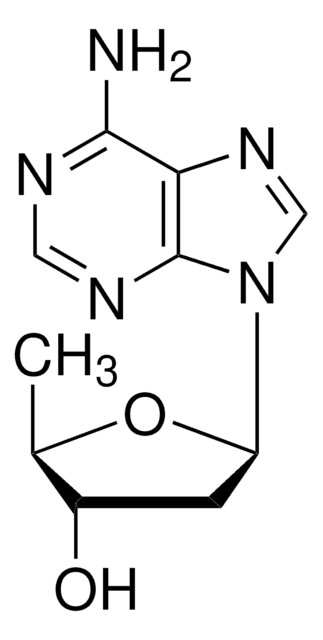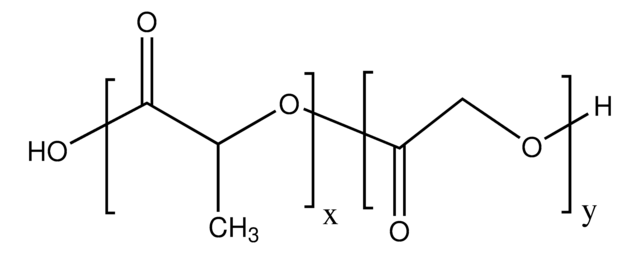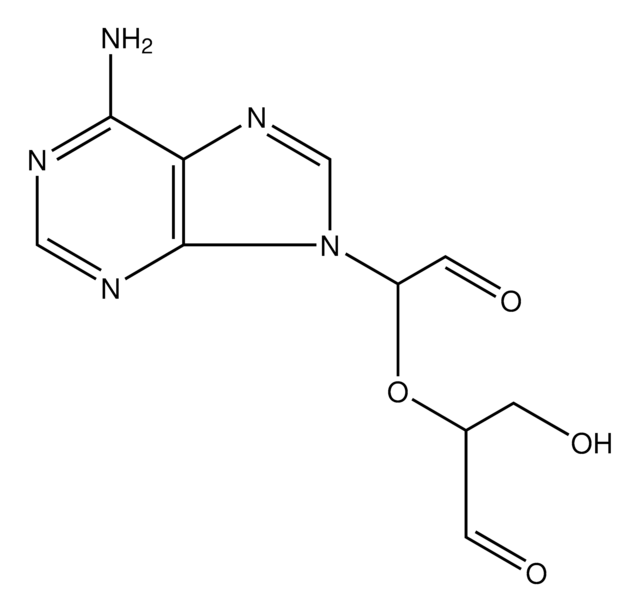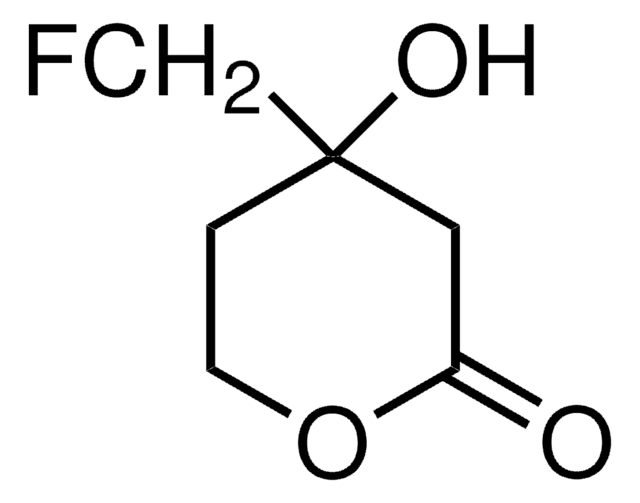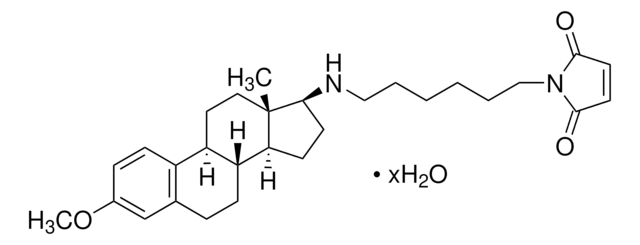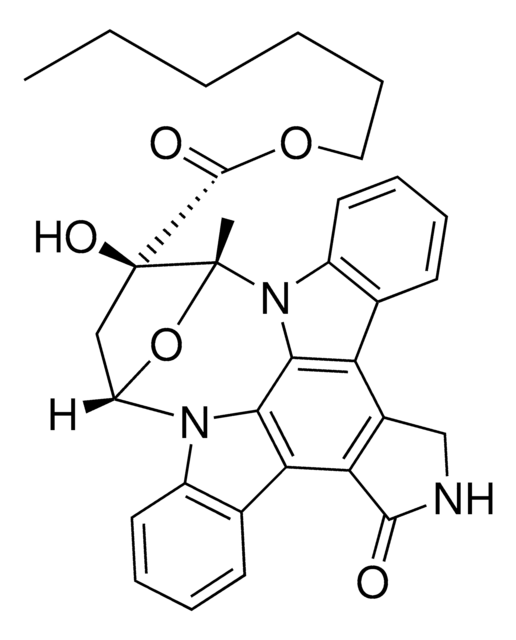M182
MDL-12,330A hydrochloride
≥98% (HPLC), powder
Synonym(s):
cis-N-(2-Phenylcyclopentyl)-azacyclotridec-1-en-2-amine hydrochloride
Sign Into View Organizational & Contract Pricing
All Photos(1)
About This Item
Empirical Formula (Hill Notation):
C23H36N2 · HCl
CAS Number:
Molecular Weight:
377.01
MDL number:
UNSPSC Code:
41106305
PubChem Substance ID:
NACRES:
NA.77
Recommended Products
Assay
≥98% (HPLC)
form
powder
storage condition
desiccated
color
white to off-white
solubility
DMSO: >20 mg/mL
storage temp.
2-8°C
SMILES string
Cl[H].C1CCCCCN=C(CCCCC1)N[C@H]2CCC[C@H]2c3ccccc3
InChI
1S/C23H36N2.ClH/c1-2-4-6-11-18-23(24-19-12-7-5-3-1)25-22-17-13-16-21(22)20-14-9-8-10-15-20;/h8-10,14-15,21-22H,1-7,11-13,16-19H2,(H,24,25);1H/t21-,22-;/m0./s1
InChI key
CKOPQUCSDBVAQG-VROPFNGYSA-N
Application
MDL-12,330A hydrochloride has been used as an inhibitor of adenylyl cyclase to block cyclic AMP signaling in mesenchymal stem/stromal cells (MSC). It has also been used as an adenylyl cyclase blocker to test its effect on the locomotor activity based on tail suspension test (TST) in mice.
Biochem/physiol Actions
Adenylyl cyclase inhibitor.
MDL-12,330A is a cycloalkyl lactamimide that acts as a voltage-gated potassium channel blocker (KV) leading to extension of action potential duration (APD) and favoring insulin secretion. It also blocks calcium (Ca2+) entry.
Features and Benefits
This compound is a featured product for Cyclic Nucleotide research. Click here to discover more featured Cyclic Nucleotide products. Learn more about bioactive small molecules for other areas of research at sigma.com/discover-bsm.
This compound is featured on the Adenylyl cyclases page of the Handbook of Receptor Classification and Signal Transduction. To browse other handbook pages, click here.
Storage Class Code
11 - Combustible Solids
WGK
WGK 3
Flash Point(F)
Not applicable
Flash Point(C)
Not applicable
Personal Protective Equipment
dust mask type N95 (US), Eyeshields, Gloves
Choose from one of the most recent versions:
Already Own This Product?
Find documentation for the products that you have recently purchased in the Document Library.
Customers Also Viewed
Peiyu Xie et al.
International immunopharmacology, 12(1), 158-168 (2011-12-14)
A recombinant complement anaphylatoxin, C4a, inhibited chemotaxis, respiratory burst and histamine release in mast cell-like HMC-1 cells that were treated with recombinant C5a anaphylatoxin. C4a also inhibited histamine release from HMC-1 cells that were induced by recombinant C3a. The inhibition
Michele Dibattista et al.
Journal of neurophysiology, 100(2), 576-586 (2008-05-30)
Hyperpolarization-activated currents (Ih) are present in several neurons of the central and peripheral nervous system. However, Ih in neurons of the vomeronasal organ (VNO) is not well characterized. We studied the properties of Ih in sensory neurons from acute slices
Dong Fu et al.
Proceedings of the National Academy of Sciences of the United States of America, 108(4), 1403-1408 (2011-01-12)
This study describes a unique function of taurocholate in bile canalicular formation involving signaling through a cAMP-Epac-MEK-Rap1-LKB1-AMPK pathway. In rat hepatocyte sandwich cultures, polarization was manifested by sequential progression of bile canaliculi from small structures to a fully branched network.
Layla Al-Nakkash
Cellular physiology and biochemistry : international journal of experimental cellular physiology, biochemistry, and pharmacology, 30(1), 137-150 (2012-07-05)
Daily subcutaneous injections with the phytoestrogen genistein, 600 mg/ kg genistein/day (600G) significantly increased intestinal chloride (Cl(-)) secretion (I(sc), µA/cm(2)) in C57BL/6J female and male murine jejunum after 1-2-weeks treatment. In 600G females, basolateral application of the adenylate cyclase inhibitor
Kohei Ueno et al.
The European journal of neuroscience, 28(10), 1956-1966 (2008-12-03)
In gustatory receptor neurons (GRNs) in Drosophila melanogaster, Gr5a and one of the Gr64s encode sugar receptors with seven transmembrane domains. Previously, we have shown that the responses to various sugars are depressed in DGsalpha mutant flies (Ueno et al.
Our team of scientists has experience in all areas of research including Life Science, Material Science, Chemical Synthesis, Chromatography, Analytical and many others.
Contact Technical Service
